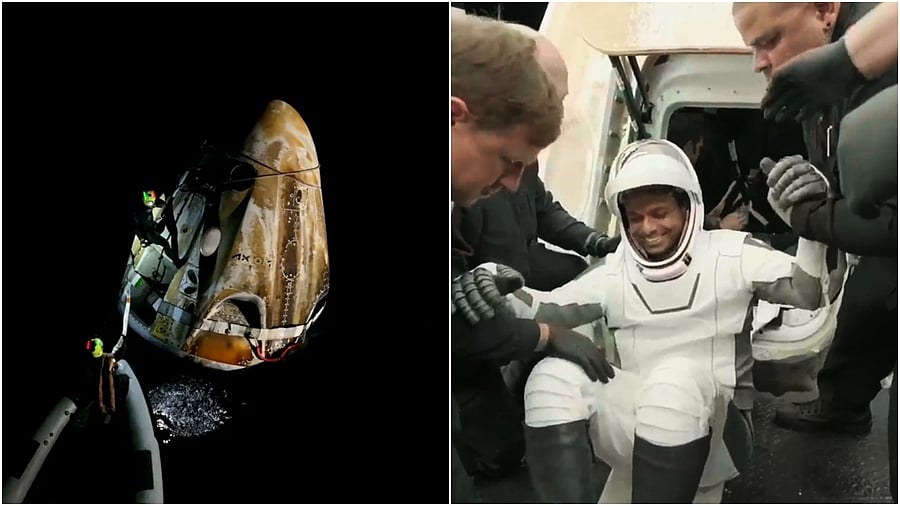
Axiom-4 mission crew member and astronaut Shubhanshu Shukla reaches Earth.
Credit: X/@Axiom
From retired Wing Commander Rakesh Sharma's flight on Soyuz T-11 in 1984 to Group Captain Shubhanshu Shukla's journey aboard Axiom-4 in 2025, India has made major strides in rockets, satellites and applications, contributing significantly to Viksit Bharat 2047. The Nehru Science Centre (NSC) in Mumbai is highlighting this progress through a new exhibition.
The exhibition, “From Ancient Skies to Modern Horizons” — designed and developed by the National Council of Science Museums (NCSM) — is now open to the public.
Veteran astrophysicist Prof M N Vahia from the Tata Institute of Fundamental Research (TIFR) inaugurated the exhibition in the presence of NSC Director Umesh Kumar Rustagi and National Centre for Science Communicators (NCSC) Chief Executive Suhas Naik-Satam.
Rustagi said the Centre’s mission is to make science inspiring and accessible.
“The exhibition, by blending heritage with modern technology, seeks to ignite interest in science and space exploration among young visitors, who represent the future of India’s space programme,” he said.
Prof Vahia noted that India’s journey to the stars began with the astronomical curiosity of its ancestors.
“The exhibition links the contributions of ancient scholars such as Aryabhata, Bhaskara II and the Kerala School of Astronomy to the modern achievements of ISRO, including the Mars Orbiter Mission (Mangalyaan) and the lunar landing of Chandrayaan-3,” he said.
The exhibition presents India’s scientific heritage through ancient observational tools, luni-solar calendars and cosmological models, before transitioning to modern developments in the space programme.
It showcases milestones such as the first rocket launch from a church in Thumba, the launch of India’s first satellite Aryabhata symbolising self-reliance, and ISRO’s interplanetary missions. A key attraction is a scaled-down model of the Vikram Lander with the Pragyan Rover from Chandrayaan-3, which drew wide attention at the inauguration.
The inaugural programme saw enthusiastic participation of school students and visitors, who also witnessed the release of the exhibition brochure by dignitaries. To enhance the visitor experience, the exhibition incorporates interactive features, including QR code integration for multilingual access and digital flipbooks that let visitors explore ancient astronomical texts and manuscripts.